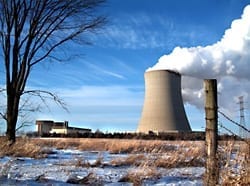
Nuclear Regulatory Commission staff plan to combine the “Part 61” low-level radioactive waste rulemaking and the Greater-Than-Class C rulemaking for efficiency, a senior official said this week.
The highly anticipated NRC report will be released to the public by the end of November, Patricia Holahan, director of the NRC’s Division of Decommissioning, Uranium Recovery, and Waste Programs, said at the virtual Low Level Radioactive Waste Forum Wednesday.
The report will be made public once it’s issued to the Nuclear Regulatory Commission (NRC) for review. It was supposed to be released this summer, but was later delayed to September or October due to heavy workloads at the NRC. The November deadline is the latest extension, and combining the proceedings will save commission staff work, Holahan said.
“If we do Part 61, we have to wait until Part 61 is final before we can move forward,” said Holahan. “And there’s overlap between the requirements for Class C and Part 61, so we feel it’s more efficient to combine them.”
The Part 61 rulemaking aims to update federal guidelines surrounding land disposal of low-level radioactive waste to address waste sources not mentioned in the original rule governing its disposal — particularly depleted uranium. NRC Staff is in the process of re-working a draft final rule to impose changes like re-applying a 1,000-year compliance period featured in the proposed rule and applying the updated regulations solely to facilities due to take significant levels of depleted uranium.
Meanwhile, the Greater-Than-Class C (GTCC) rulemaking has been in the works for years. The NRC got the ball rolling on the latest proceedings in December 2015, after Texas inquired about licensing a facility in the state for disposal of GTCC, GTCC-like, and transuranic waste.
This week, Holahan said some people who submitted comments on GTCC supported near surface disposal of GTCC waste and removal of transuranic waste, while others wanted such waste to be disposed of in a deep geological repository — something that still does not exist.
The NRC’s analyses also found the majority of GTCC and Transuranic Waste is potentially suitable for near-surface disposal and that most could be regulated by agreement states.
Most rules generally require that Greater-Than-Class C (GTCC) waste be placed in a geologic disposal facility, such as the proposed, and perpetually stalled, Yucca Mountain site in Nye County, Nev.
The NRC deals with non-defense transuranic waste — material and equipment contaminated with elements heavier than uranium. The Department of Energy deals with transuranic waste generated by national defense activities.